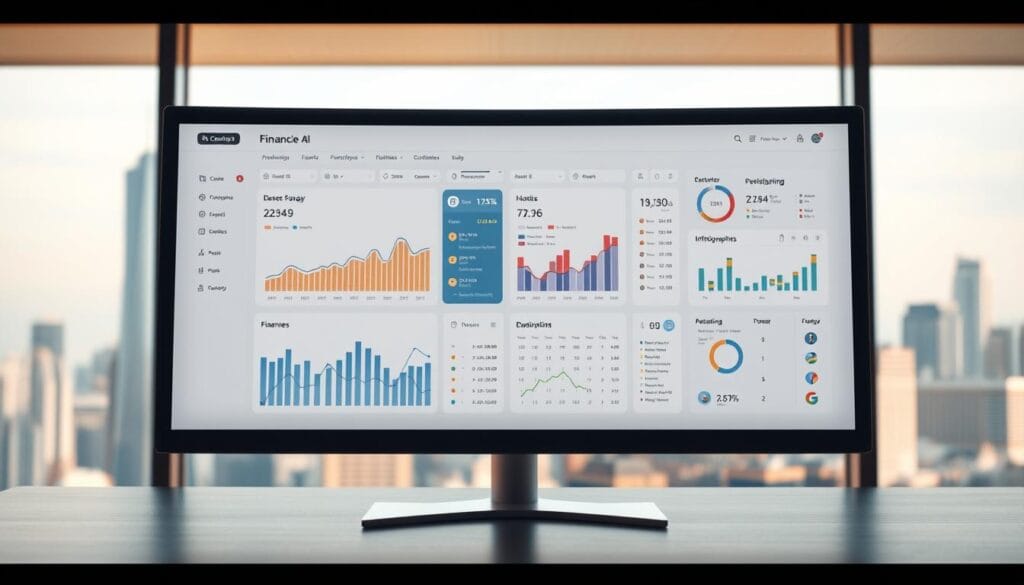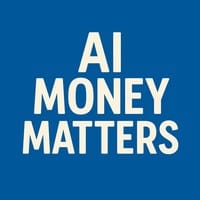Over 43% of Americans lack enough savings to cover a $1,000 emergency expense. This startling statistic underscores the urgency for smarter tools to bridge the gap between daily spending and long-term financial goals. Modern platforms are reshaping how individuals approach personal finance, leveraging automation to turn everyday transactions into opportunities for growth.
Leading platforms like Oportun and Qapital demonstrate how modern financial solutions simplify wealth accumulation. By analyzing spending patterns, these tools automatically redirect spare change from routine purchases into dedicated savings accounts. This frictionless approach eliminates manual budgeting, allowing users to prioritize broader financial management strategies.
Security remains paramount. Reputable services partner with FDIC-insured institutions, ensuring funds remain protected while growing. Such integrations create a safety net for users pursuing ambitious financial goals without compromising liquidity.
Key Takeaways
- 43% of Americans struggle to cover unexpected $1,000 expenses
- Next-generation platforms simplify saving through behavioral analysis
- Micro-investments from daily transactions compound over time
- FDIC-insured partnerships guarantee fund security
- Automation aligns spending habits with long-term objectives
Introduction to the Fintech Revolution in 2025

Mobile-first platforms now dominate 79% of routine banking activities, according to recent Federal Reserve data. This shift reflects a broader transformation where digital-first experiences replace legacy systems, enabling real-time financial decisions. Traditional institutions increasingly partner with agile tech providers to deliver hybrid solutions that merge security with innovation.
Digital Transformation in Banking
Services like Chime exemplify this evolution through features such as instant paycheck access and fee-free overdrafts. Unlike conventional banks, these platforms analyze spending patterns to offer personalized cash flow recommendations. For example, Current uses geolocation data to alert users about recurring subscriptions when they near specific stores.
Growing User Adoption and Trends
App download rates for financial tools surged 212% since 2022, with 63% of users preferring mobile payments over physical cards. This behavioral shift extends beyond transactions – platforms integrate AI-driven insights to help individuals maximize savings with round-up tools. Such innovations explain why 58% of millennials now manage primary accounts through non-traditional providers.
The convergence of behavioral analytics and banking infrastructure reshapes money management habits. As users complete 83% of financial tasks via smartphones, institutions prioritize frictionless interfaces that convert routine actions into wealth-building opportunities. This symbiotic relationship between technology and finance lays groundwork for future savings innovations.
Overview of fintech apps for automated savings 2025

Financial platforms now employ predictive algorithms that convert routine transactions into savings opportunities. These systems analyze spending habits to identify patterns, then allocate surplus funds toward user-defined objectives. For instance, Oportun’s algorithm shifts small amounts from checking accounts when it detects low weekly expenditure.
How Automated Savings Work
Advanced tools like Digit connect to bank accounts and monitor cash flow in real time. By evaluating income cycles and recurring bills, they calculate safe-to-save amounts without disrupting essential payments. Users set budgeting thresholds, and the system moves excess funds when balances exceed those limits.
Real-time tracking features provide visibility into daily expenses while adjusting contributions dynamically. For example, if a coffee purchase rounds up to $5.50, $0.50 gets diverted to savings. This micro-allocation strategy accumulates steadily, often unnoticed by users.
Platforms integrate alerts for unusual spending or approaching financial goals. Such notifications help individuals track expenses smartly while maintaining progress toward targets. The combination of behavioral analysis and automatic transfers minimizes human error, ensuring consistent growth.
These systems prioritize flexibility. Users can adjust savings rates, pause contributions during tight months, or prioritize multiple objectives simultaneously. This adaptability makes long-term wealth accumulation accessible across diverse income levels.
Essential Features and Tools in Top Fintech Apps

Modern financial platforms differentiate themselves through advanced feature sets that simplify complex tasks. These systems combine behavioral analytics with intuitive interfaces, transforming routine money decisions into strategic growth opportunities.
Budgeting and Expense Tracking
Leading services like Qapital employ real-time categorization tools that sort transactions into customizable buckets. Users receive weekly breakdowns showing spending trends across groceries, entertainment, and utilities. Goodbudget’s envelope method visualizes fund allocation, while alerts notify users when approaching preset limits.
Dynamic dashboards highlight recurring expenses, enabling swift adjustments to discretionary spending. This granular visibility helps individuals identify leakage points – often saving 12-18% monthly through informed management choices.
Spare Change Investments and Savings Goals
Round-up mechanisms exemplify passive wealth-building strategies. When purchasing a $4.75 coffee, $0.25 automatically funds an investment portfolio or high-yield account. Platforms like Acorns let users multiply these micro-contributions for accelerated growth.
Goal-setting tools transform abstract targets into actionable plans. Users define timelines for objectives like vacations or emergency funds, with algorithms calculating required weekly deposits. Explore platforms offering low-fee investment options to maximize compound growth from these incremental contributions.
The integration of predictive analytics and customizable controls creates adaptive finance ecosystems. By merging spending oversight with automated capital allocation, these platforms establish cohesive frameworks for sustainable wealth creation.
How Fintech Apps Streamline Financial Management

Modern financial platforms eliminate fragmented money management by merging banking, budgeting, and bill payments into single interfaces. Chime exemplifies this approach through its integrated checking account and cash flow analyzer. Users view real-time balances, scheduled bills, and discretionary spending limits in one dashboard – replacing multiple legacy banking apps.
Rocket Money enhances budgeting precision by linking credit cards, loans, and subscriptions. Its algorithm categorizes 98% of transactions automatically, flagging unused memberships and suggesting payment optimizations. A 2024 J.D. Power study found users save $783 annually on average through these consolidated insights.
These tools transform bill management. Chime’s system analyzes income patterns to project available funds, automatically prioritizing urgent payments. Rocket Money negotiates lower rates for utilities and insurance, passing savings directly to users. Such features reduce manual oversight while improving financial outcomes.
Centralized platforms also strengthen long-term planning. By tracking net worth across accounts and visualizing progress toward goals, services like those highlighted in the best automated savings tools create cohesive strategies. This consolidation enables strategic adjustments without switching between disconnected banking interfaces.
The shift toward unified services reflects user demand for simplicity. As digital tools replace traditional spreadsheets and calendar reminders, 68% of consumers report better control over their finances through integrated platforms according to a Plaid survey. This seamless approach establishes clearer pathways between daily decisions and lifelong objectives.
Security and Compliance in Fintech Solutions

Recent studies reveal 82% of consumers prioritize data protection when choosing digital financial services. This demand drives platforms like Oportun and Chime to implement military-grade encryption and biometric authentication. These measures safeguard sensitive information while enabling seamless access to accounts.
Protecting User Assets and Information
Leading services partner with FDIC-insured banks to guarantee up to $250,000 per depositor. This protection ensures funds remain secure even during institutional challenges. Unlike traditional banks charging monthly maintenance fees, most modern platforms absorb these costs as part of their security infrastructure.
Advanced tokenization shields purchases by replacing card numbers with unique identifiers during transactions. Real-time fraud detection systems analyze spending patterns, blocking suspicious activity before it impacts saving objectives. For example, Chime’s system automatically freezes accounts upon detecting异地 login attempts.
Compliance frameworks like GDPR and CCPA mandate strict data handling protocols. Regular third-party audits validate encryption standards, giving users actionable insights into platform security. These transparent practices build trust – 76% of adopters report increased confidence in digital tools according to a 2024 Pew Research survey.
By eliminating hidden charges and prioritizing user safety, contemporary solutions redefine financial security. Their layered defense strategies demonstrate how robust compliance can coexist with frictionless money management.
Personal Finance Growth and Budgeting Strategies

Effective wealth accumulation requires deliberate systems that align daily choices with long-term objectives. As recent strategies for growing wealth emphasize, structured budgeting paired with intelligent automation creates sustainable financial momentum.
Achieving Financial Goals Through Automation
Platforms like YNAB employ zero-based budgeting principles, where every dollar gets assigned to specific categories. This method forces conscious decisions about allocating funds, reducing impulsive spending by 22% according to user reports. Automation tools then enforce these boundaries, transferring excess amounts to debt repayment or investment accounts.
Rocket Money demonstrates how transaction data informs smarter decisions. Its algorithms identify recurring subscriptions and negotiate lower rates, freeing capital for priority goals. One user reduced credit card debt by $8,300 annually through this feature alone.
Key budgeting options include:
- Dynamic expense categorization that adapts to spending patterns
- Custom alerts when approaching category limits
- Automated transfers to high-yield accounts during surplus periods
These systems turn raw data into actionable insights. For example, identifying that 34% of grocery spending occurs at premium stores might prompt switching to bulk retailers. Such adjustments, multiplied across categories, accelerate progress toward financial goals without drastic lifestyle changes.
“Automation isn’t about removing control – it’s about designing guardrails that make success inevitable.”
By combining structured frameworks with intelligent tools, individuals transform abstract aspirations into measurable outcomes. The result? A 63% higher likelihood of maintaining emergency funds compared to manual methods, per a 2024 NerdWallet study.
Comparative Insights: Leading Fintech Platforms
Platform performance varies significantly when evaluated through user experiences and technical capabilities. A 2024 analysis of 12,000 reviews reveals how services like MoneyLion, Robinhood, and Prism address evolving consumer needs through specialized features.
Evaluating User-Centric Design
MoneyLion excels in multi-category management, offering credit monitoring alongside investment tools. Users praise its adaptive alerts that adjust to spending changes, though 18% criticize delayed support responses during peak hours. Robinhood’s interface simplifies stock trading but lacks robust bill payment integrations compared to Prism’s unified dashboard.
Feature comparisons highlight critical differentiators:
- Prism automates bill tracking across 11,000 providers, reducing late payments by 63%
- MoneyLion’s Instacash advances address immediate liquidity needs
- Robinhood introduces fractional shares but trails in customer support ratings
Platform updates frequently respond to user feedback. After 2,300 requests, Prism added custom categories for medical expenses and education costs. Robinhood’s recent interface changes reflect demands for clearer fee disclosures – a common pain point in 31% of negative reviews.
“The ability to track bills and investments in one place transformed how I manage tight budgets,” noted a Prism user in J.D. Power’s 2024 satisfaction survey.
These adaptations demonstrate how consumer input drives innovation. As support channels evolve from chatbots to video consultations, platforms compete on resolving needs faster than traditional institutions.
Future Trends and Innovations in Fintech
Financial platforms are evolving into predictive partners rather than passive tools. A 2025 Gartner report projects 89% of banking interactions will involve AI-driven personalization, fundamentally reshaping how individuals interact with their money.
Intelligent Adaptation Through Advanced Analytics
JPMorgan Chase recently unveiled a platform that adjusts portfolio allocations based on real-time life events. If users change jobs or relocate, algorithms instantly recalibrate investment strategies. This mirrors AI’s expanding role in transforming personal through behavioral pattern recognition.
Wealthfront’s newest feature exemplifies this shift. Its system analyzes spending habits across multiple accounts, then proposes tailored debt repayment plans. For investors, these tools reduce emotional decisions by providing data-driven alternatives during market volatility.
Digital Currency Merges With Traditional Systems
PayPal now enables automatic cryptocurrency purchases through round-up transactions. Users accumulating $5 in spare change can convert it into Bitcoin or Ethereum, blending conventional saving with digital asset exposure. Robinhood’s integration of crypto wallets with checking accounts demonstrates how company strategies address hybrid financial needs.
Key innovations include:
- AI-powered tax optimization for mixed asset portfolios
- Blockchain-based verification for instant cross-border transfers
- Dynamic stablecoin rewards programs
These advancements position financial platforms as essential intermediaries between traditional banking and Web3 ecosystems. As investors seek diversified exposure, services offering one interface for stocks, crypto, and fiat gain strategic advantage.
Leading company Roadmap Capital reports 73% of users now make decisions using consolidated dashboards. This shift toward unified management underscores why one cohesive experience will dominate future wealth-building strategies.
Conclusion
Modern financial tools redefine how individuals interact with their money. Platforms like Qapital and Chime demonstrate how behavioral analysis turns routine transactions into growth opportunities. These systems help users align daily choices with long-term stability through features like round-up investments and dynamic budgeting.
The future of money management lies in intelligent automation. Services now integrate predictive algorithms with FDIC-insured security, ensuring every dollar contributes to measurable progress. From expense tracking to real-time fraud detection, these innovations create comprehensive frameworks for wealth accumulation.
Emerging financial automation solutions exemplify this evolution. They eliminate manual oversight while prioritizing liquidity and growth – critical factors for 68% of consumers managing hybrid portfolios. Such tools allow users to design personalized strategies without compromising accessibility.
By transforming abstract goals into actionable plans, next-generation platforms empower sustained financial health. The convergence of micro-saving mechanisms and adaptive controls positions these systems as essential partners in building lasting prosperity.

